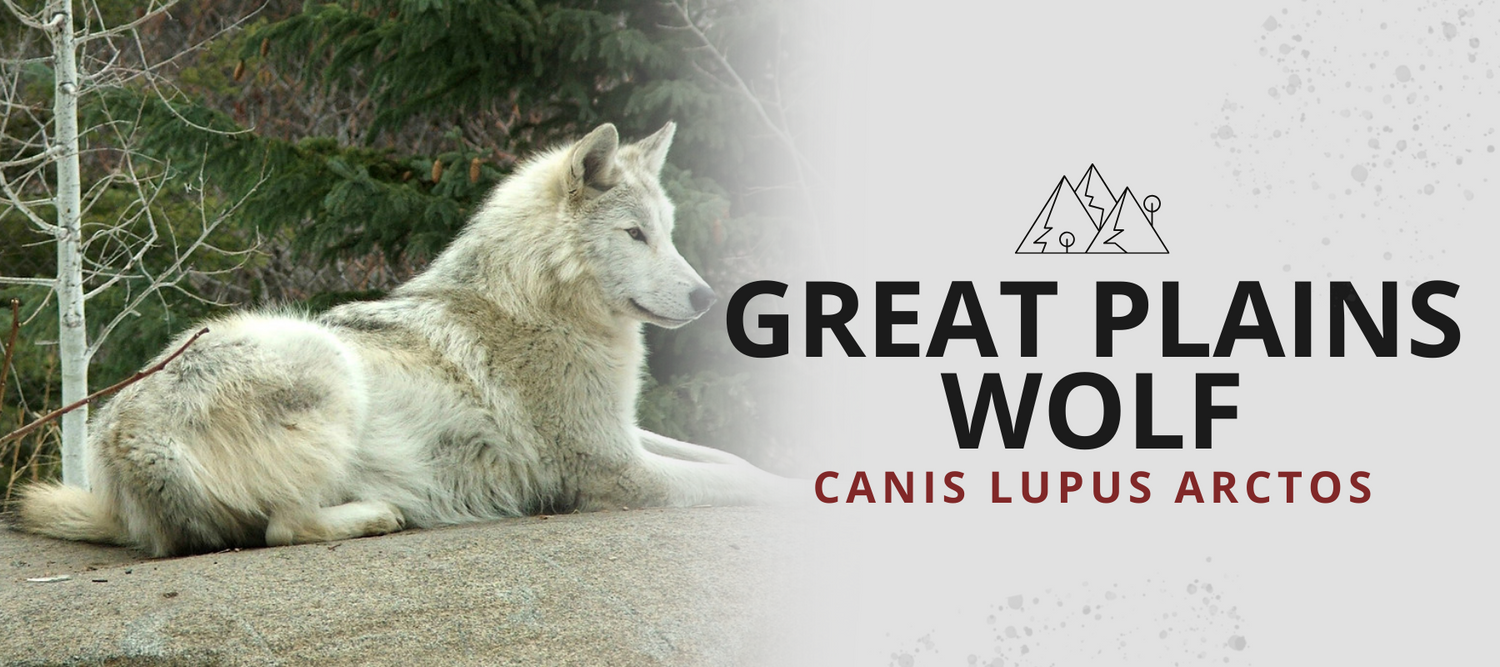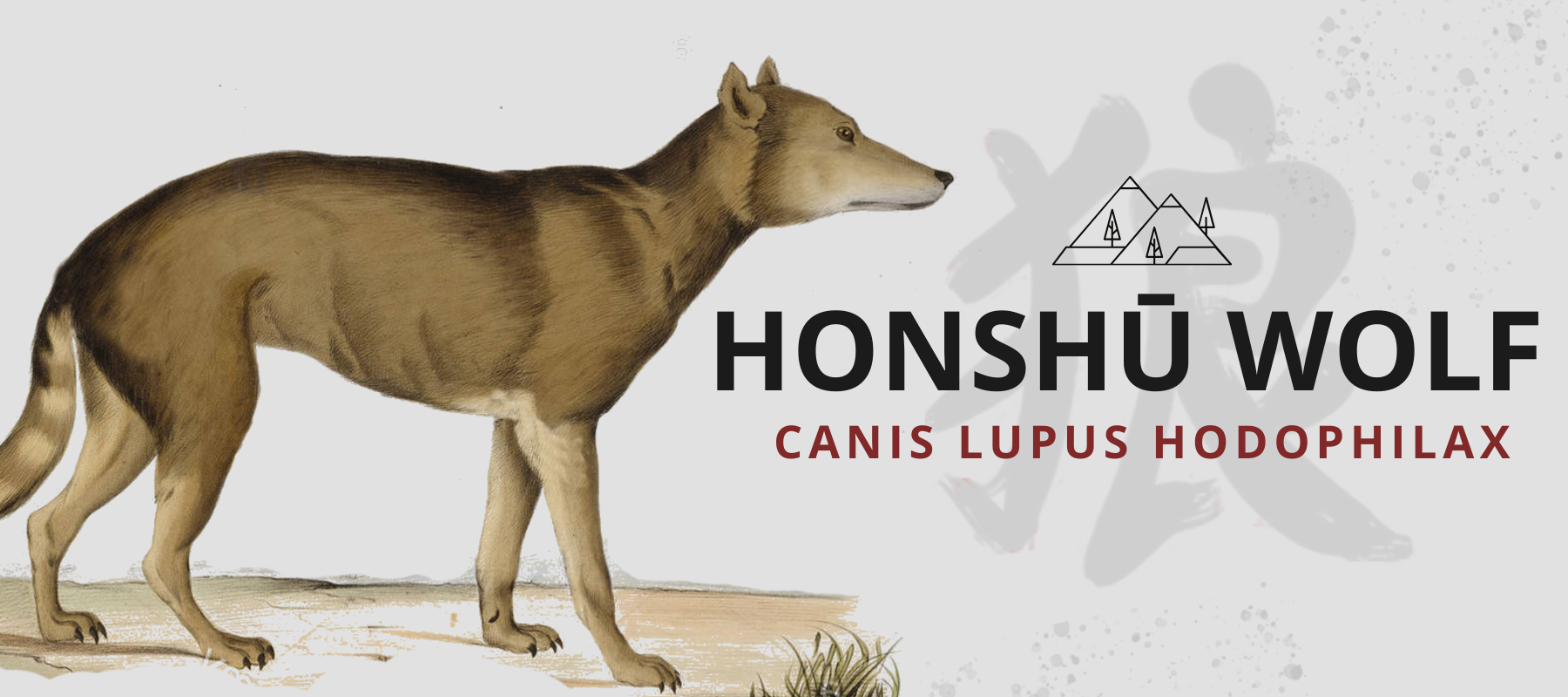
CANIS LUPUS NUBILUS
The Great Plains wolf (Canis lupus nubilus) is the most common subspecies of the gray wolf (Canis lupus) living in the continental United States. It currently inhabits the Great Lakes region of the western United States and Canada. It was first identified as a specific species Canis nubilus by the American zoologist and naturalist, Thomas Say, in 1823 and was finally considered as a subspecies of the grey wolf in 1841 by the ethnologist German Prince, Maximilian de Wied-Neuwied.
- Common name: Great plains wolf
- Scientific name: Canis lupus nubilus
- Other names : Buffalo wolf
- Specie: Grey wolf
- Type: Mammals
- Diet: Carnivore
- Size 4,6 to 6,2 feet
- Weight: 79 to 130 lbs
GREAT PLAINS WOLF DESCRIPTION
The great plains wolf is the most common of the gray wolves in the continental United States. It average size is between 1.37 and 1.90 m in length from snout to tip of tail. It weighs between 79 and 110 lbs (36 to 50 kg). In comparison, adult females are smaller and weigh between 64 and 86 lbs (29 to 38 kg).
This maned wolf is recognizable by its coat which color is usually a mixture of gray shades, black tones, red, buff or brown.

GREAT PLAINS WOLF HABITAT
In the past, this canid (canidae) was found throughout the United States and southern Canada.
Today, stable populations remain in Canada and it is again present in the United States in the states of Minnesota, Wisconsin and northern Michigan.
In 2004, a census showed that there were approximately 3,700 great plains wild wolves in the United States. In Dakota, lone wolves could be seen, but it was proven that they did not reside in that state.

GREAT PLAINS WOLF DIET
Like the other species, the great plains wolf is a carnivore. In Minnesota, 80% of wolf prey are white-tailed deer. As you travel north, their diet changes. They hunt large animals as caribou and moose, while in the west it's elk and buffalo that are the primary food source. In case of necessity the wolf also hunts rodents.
GREAT PLAINS WOLF BREEDING
This social animal has a social structure based on a dominance hierarchy. In the pack, only the dominant male and female reproduce to regulate the births. However, sometimes when prey is abundant, there may be multiple wolf pups.
The mating season usually takes place between December and January. After a gestation period of 63 days, the female gives birth to a litter of 4 to 6 cubs in a den. The wolf's den is usually located on the side of a mountain, in a cave or in a hole made by the parents. Births have been observed in a section of a dead tree.
Cubs are born deaf and blind and do not begin to hear until 12 to 14 days after birth. Between 3 and 6 weeks, they start to come out of the den to explore the environment in which they will later live. They will reach adulthood at about 7 months old and will reach sexual maturity at about 22 months old.

GREAT PLAINS WOLF HABITS
The great plains wolf is a great traveler. One of them was tracked 886 km from its home range in Minnesota. They can leave the original wolf pack at any time of the year, but disperse more frequently in winter and during April.
This subspecies of wolf canis lupus, like most grey wolves, can only live in an environment where the human population density is low and also in covered areas that provide shelter for it and its prey. However, this wolf lives in prairies as well as in deciduous forests.

GREAT PLAINS WOLF CONSERVATION
Most of the information on the Plains wolf has been collected since 1930 in Minnesota, in the Northern Hemisphere of the American state where the wolf currently lives. Since the 1960s, five hundred radio-collared wolves have been tracked in northwestern Minnesota, a tiny portion of the immense range of this subspecies.
By retreating to the most remote areas, this canine narrowly escaped the fate of the government's extermination program.
In 1973 the Endangered Species Act fully protected the wolf and by 1978 the population had grown sufficiently to move the wolf from endangered species list to threatened status.
Great plains wolf population have been steadily increasing about 5% per year since the late 1970s. More than 3,000 wolves now live in Minnesota's territory. They have managed to saturate the northern half of the state and are beginning to proliferate in agricultural areas.
They live in an area where 350,000 cattle, 38,000 sheep and thousands of other domestic animals are raised. It is therefore somewhat normal that wolf packs do not denigrate such opportunities to feed the whole pack.
The wolves moved eastward and crossed the major highways of Wisconsin and northern Michigan. Each of these states is currently home to 70 to 80 specimens.
In 1926, despite conservation efforts, scientists thought that the Plains Wolf species had completely disappeared, eradicated by humans.
However, later scientific studies have shown that some wolves from Michigan, Wisconsin and Minnesota were, in fact, descendants of Canis lupus nubilus. Their numbers continued to decline and the canine nearly became extinct before it was federally protected and classified as a critically endangered species in 1974.
Thanks to this protection, Minnesota populations were able to increase again, to the point where they could be reclassified as threatened on the red list in 1978. Some zoos also participated in wolf conservation and the reintroduction of captivity wolves by developing captive breeding.
By 2009, the wolf population in the Great Lakes region had increased to approximately 580 specimens in Michigan, 2900 in Minnesota, and 620 in Wisconsin. In response, the Fish and Wildlife Service decided of hunting and trapping 400 of these wolves despite their threatened status. Finally, the agency had to suspend the massacre, following the intervention of wildlife protection NGOs, which saved many wolves from a tragic destiny.
Participate in the protection of the great plains Wolf by proudly wearing a wolf bracelet to proclaim your support for the preservation of this animal.
Discover also the incredible Honshu wolf in our article dedicated to this species.



